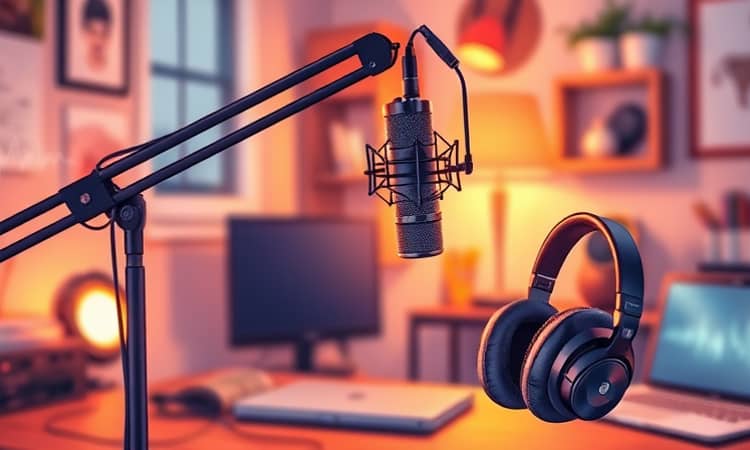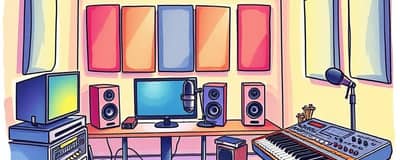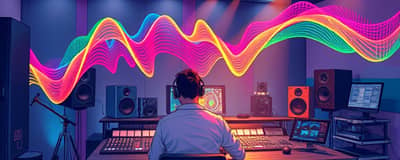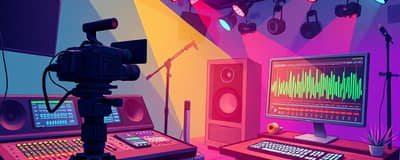Podcasting has the power to connect voices across continents, to spark conversations, and to build communities. Yet even the most compelling story can fall flat without crystal-clear audio.
Choosing the right microphone may seem daunting, but with the right knowledge, you can find the perfect match for your voice, budget, and recording environment.
Understanding Microphone Types
At the heart of every great podcast is a microphone that captures every nuance of the speaker’s voice. Broadly speaking, microphones fall into two categories: dynamic and condenser.
Dynamic microphones excel in tough environments, thanks to their robust design and low sensitivity to background noise. They require no external power and are ideal for home setups where ambient sounds may creep in.
Condenser microphones, on the other hand, offer exceptional detail and clarity in sound reproduction. They need phantom power (48V) when using XLR connections, or they draw power directly through a USB port in plug-and-play models. While they flourish in treated studios, they may pick up unwanted room reflections if used in noisy spaces.
Next, consider connectivity. USB microphones provide effortless plug-and-play convenience, perfect for beginners or remote podcasters. For those craving professional flexibility and higher fidelity, XLR models paired with an audio interface deliver unmatched control over gain, EQ, and effects.
Exploring Polar and Pickup Patterns
How a microphone listens to sound is defined by its polar pattern. Choosing the right pickup pattern can dramatically improve your recordings.
- Cardioid: Captures audio from the front while rejecting noise from the sides and rear. Perfect for solo hosts and close-mic vocals.
- Omnidirectional: Picks up sound equally from all directions. Ideal for round-table discussions or capturing ambient room tone.
- Figure-8 (Bi-directional): Records from front and back, making it a go-to for two-person interviews with a single mic.
- Multi-pattern: Offers switchable patterns on one mic, giving you studio-level versatility without changing equipment.
Many professional microphones also include high-pass filters to remove low-frequency background noise, such as HVAC hum or traffic rumble, ensuring your voice remains pristine.
Budget Considerations and Price Ranges
Your budget will guide you toward a category, but remember that every range has standout performers. Entry-level microphones under $100 can achieve impressive results when paired with solid recording technique and acoustic treatment.
Mid-range options ($100–$250) often blend affordability with advanced features, like onboard gain controls or multiple polar patterns. When your aspirations turn more professional, higher-end models ($300–$500) deliver broadcast-quality sound, robust build quality, and long-term reliability.
Summary of Popular Microphones
Use this table to compare key features at a glance:
Top Microphone Recommendations
While many mics shine under the spotlight, a few have earned legendary status among podcasters:
The Shure SM7B stands as the industry standard for broadcast-quality sound. Its warm tone and superb off-axis rejection make every voice sound rich and clear, though it requires a high-gain preamp.
If you need a turnkey solution, the Shure MV7 brings digital and analog outputs together in one package, offering onboard touch controls and real-time headphone monitoring for seamless workflow.
For creators on a tight budget, the Samson Q2U and Audio-Technica ATR2100x pair dual USB/XLR flexibility with rugged durability, making them ideal first investments.
Broadcast veterans often turn to the Electro-Voice RE20 or Heil PR40 for their neutral frequency response and rock-solid construction. These dynamic XLR mics excel at capturing every vocal inflection without unwanted coloration.
Additional Features and Accessories
Beyond the microphone itself, several accessories can elevate your recordings:
- Shock Mounts and Boom Arms: Keep vibrations and desk knocks out of your audio.
- Pop Filters and Foam Windscreens: Lessen plosive bursts and sibilance for smoother speech.
- Audio Interfaces and Mixers: Offer multiple inputs, phantom power, and hands-on control over gain and EQ.
Many USB microphones bundle software suites for sound shaping, while XLR setups often rely on third-party plugins to refine tonal character. Investing in durable cabling and a solid warranty can also save you frustration down the road.
Steps to Choosing the Right Mic
- Define your budget and long-term goals.
- Assess your recording environment for noise and acoustics.
- Decide on connection preference: USB simplicity or XLR flexibility.
- Choose between dynamic and condenser based on sensitivity needs.
- Select a polar pattern that matches your hosting format.
- Prioritize essential features like onboard controls or filters.
- Review top models and listen to audio samples if possible.
- Purchase from reputable vendors with good return policies.
Choosing the right microphone is both a technical decision and a creative one. It’s about finding the tool that lets your voice resonate authentically, forging deeper connections with your audience.
Whether you’re launching your first episode or upgrading to pro gear, armed with this guide you can make an informed choice that enhances your storytelling, boosts your confidence behind the mic, and brings your podcast dreams to life.
References
- https://www.thepodcasthost.com/equipment/the-best-podcasting-microphones-on-the-market/
- https://www.musicradar.com/news/best-podcasting-microphones
- https://podcastoutfitters.com/collections/podcast-microphones
- https://www.adodemedia.com/how-to-videos/v/best-microphone-for-podcasting
- https://marco.org/podcasting-microphones
- https://www.ryrob.com/best-cheap-podcast-microphones/
- https://riverside.fm/blog/podcast-microphone
- https://www.bandrewscott.com/best-podcast-microphones














